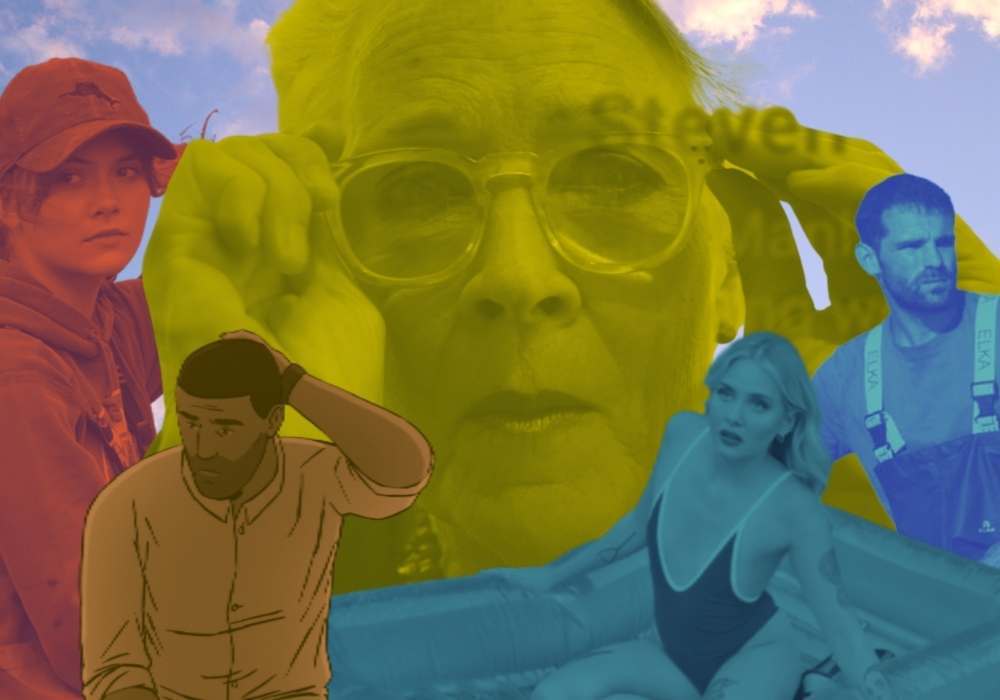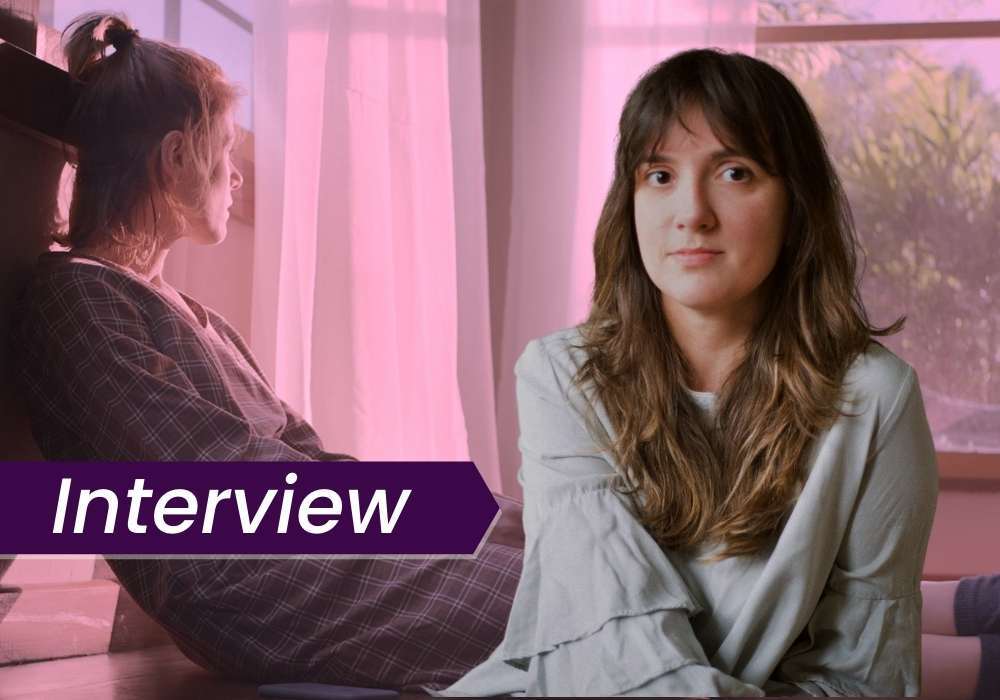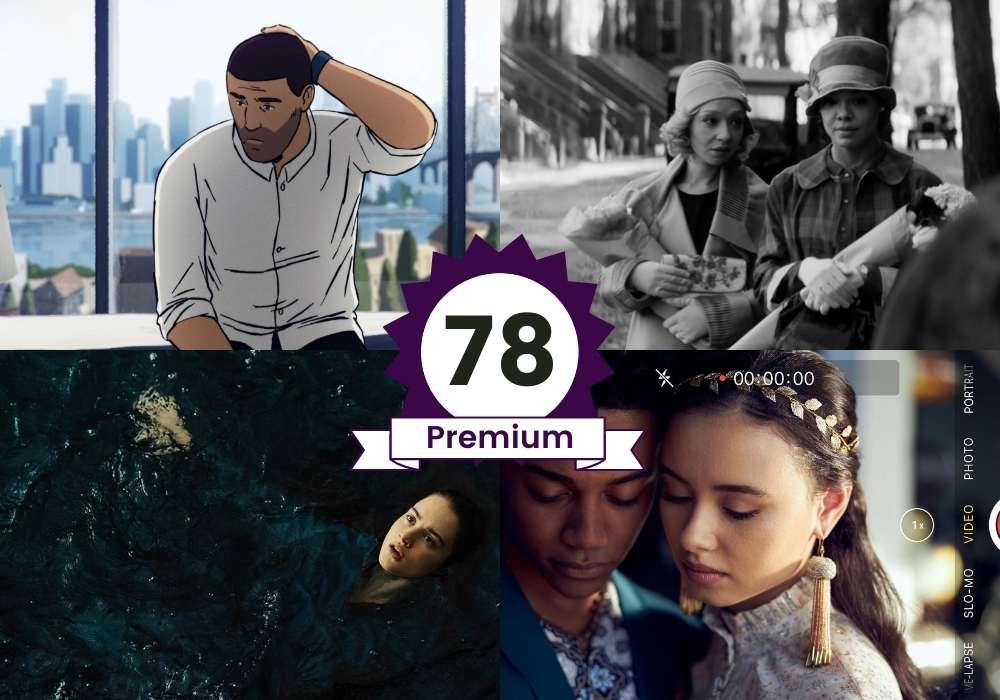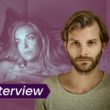Ana Katz’s The Dog Who Wouldn’t Be Quiet was our favourite film of Sundance and won awards at IFFR. We spoke with Katz about collaborating with her brother over a three year shoot.
Check out all our Sundance coverage.
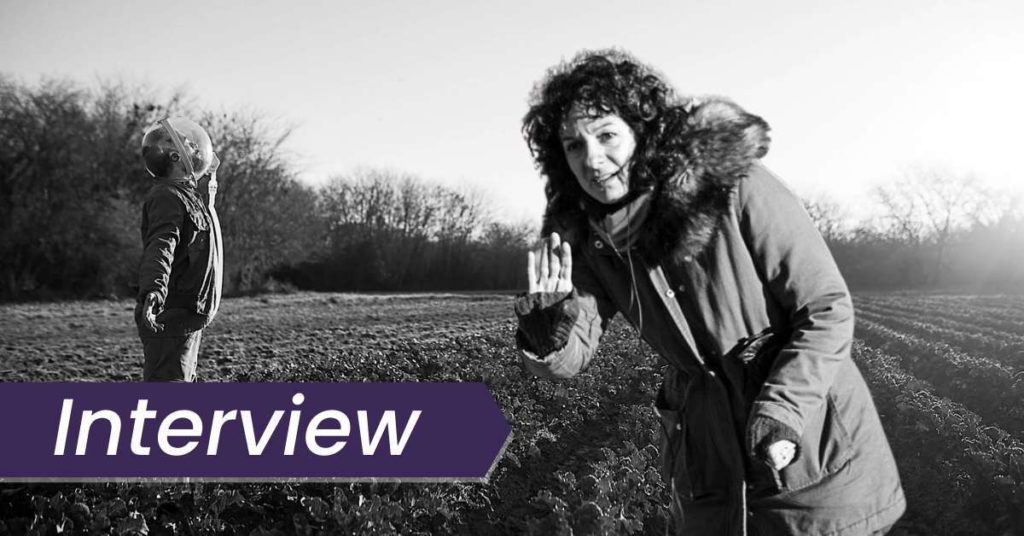
Discover one film you didn’t know you needed:
Not in the zeitgeist. Not pushed by streamers.
But still easy to find — and worth sitting with.
And a guide to help you do just that.
The Dog Who Wouldn’t Be Quiet, the latest feature from Argentinian writer-director Ana Katz (My Friend from the Park), is a series of vignettes in the life of Sebastián (played by her brother, Daniel Katz) over the course of several years. Each vignette features small moments of connection, which taken together, feel like a full, rich life depicted in almost insignificant details. We see the moment when Sebastián is forced to choose between his day job and his dog; the moment he meets his future wife, but not when they marry; a moment of crisis as a father; and a moment of calm comfort that closes out the film. The moments are fleeting, but also often very funny and sweet.
The film opens with a gathering of Sebastián’s neighbours in his backyard. It’s a rainy day, and they’re all crammed into his backyard, their umbrellas hitting each other, as they complain to him about his ‘dog who wouldn’t be quiet’ whenever it is home alone without Sebastián. Of course, Katz never lets us hear the dog’s supposed cries of longing, so we can’t share in the neighbours’ frustration, only in Sebastián’s affection for his dog. This is soon followed by a meeting at work, where his two bosses explain to him that they can’t allow him to bring his dog to work would because it would be the first step into an office of chaos; it’s hilarious, if sad, then, when the film later takes a sci-fi turn, and everyone suddenly adapts to wearing giant glass helmets.
The image from the film that sticks in my mind is the wide shot of Sebastián and his dog traveling down the long hallway of the building together, leaving the corporate world behind for a place where they can be together. That place is rural, and we watch as Sebastián and his dog play together in a field, in a wide shot, as if watching a romance unfold — before suddenly being confronted by the dog’s death early on in the film, depicted through a series of drawings that are all the more heartbreaking in their abstractness.
Shot over three years, The Dog Who Wouldn’t Be Quiet asks us to fill in the ellipses between the vignettes, when we skip ahead in time with no warning and no signal but a change in the actors’ physicality — a new haircut, or changing weight. It’s a film that gives equal weight to the joy Sebastián gets from playing with his dog as it does to the encounter he has with a sandwich on public transport. On a train ride to his old office, hoping to get his job back now that his dog is gone, he eyes a sandwich left behind by another passenger. Katz shoots this as a sort of meet cute, in which the camera repeatedly eyes the sandwich in closeup as Sebastián gets up the nerve to switch seats so he can eat it. It’s a funny scene, but a melancholy one, too, and that tinge of sadness pervades the film and its often absurdist humour.
And yet the film is side-splittingly funny, at times. At his mother’s wedding, Sebastián eyes a woman on the dance floor (Julieta Zylerberberg), who eyes him in return, and they find themselves dancing together. Their goofy dance stands in for an entire courtship; in the next scene, she’s pregnant. Skipping right over the birth, we find the couple again at a doctor’s office where they’re concerned about their baby’s health. The doctor is perplexingly wearing a glass helmet, akin to what an astronaut would wear on a spacewalk, and yet the parents aren’t, leading us to spend much of the scene wondering what the helmet is for. The reveal that follows is one I can’t spoil, but it’s a moment of astute physical comedy that had me in stitches.
Before the film’s world premiere, I sat down with Ana Katz to talk about making a film about grief with her brother, crafting an elliptical film about a man coming of age through changing relationships in an often hostile world, and how real life melded with the life depicted on screen.

Seventh Row (7R): Where did the idea for The Dog Who Wouldn’t Be Quiet come from?
Ana Katz: It’s a film that comes from an emotional intuition more than a rational thought. I feel that human beings can adapt too easily to a system which is very complex and very cruel.
The initial idea was to tell a story about a man — and this is my first time telling a story closely about a man — who society avoids or rejects. It’s a man who has a special sensibility.
For example, he can’t accept that his dog cries when he’s not at home. He prefers to quit his job [than leave the dog alone], when he has to make a decision [between the two]. I feel that society marks a very clear path for how men should be. It’s like, we don’t need those kinds of men like [the character], so get out.
I wanted to think about a man in a different way, regarding sensibilities, thoughts, and feelings. I wanted to talk about the demands of work and the cruel daily routines of a human being’s life.
7R: We see Sebastián going through multiple different jobs at different stages of his life. How did you think about what those different stages look like and what was key in each of them?
Ana Katz: The human scale was the main thing for me. To put a very strong accent in those little things, which are maybe the ones we are not listening to. The pandemic part [where the film enters the realm of science fiction], I imagined that many years before [the actual 2020 pandemic] happened. I feel that it’s very complicated for us to listen to the world. There can be a meteor, a pandemic, and an illness, but still, we decide not to listen to [the planet].
It was a beautiful process because I always tried to connect with the emotional part of the point. For example, in the death of the dog, I wanted not to go to a conventional idea of a death. I wanted to be very near [to the character’s emotions]. Maybe to be very near, in our brain, we need to focus on our feelings and not in our typical way of telling stories in films or TV. It was like trying to make an experiment, but always with the human scale.
7R: I understand you spent three years shooting The Dog Who Wouldn’t Be Quiet?
Ana Katz: Yes. It reminded me of when I was at university studying cinema, and we made a short film, among friends. We were borrowing the camera from the university, and we tried to focus on the process of searching for something with no name.
Sometimes, producers need answers. I understand it, of course. For example, now, I’m in the middle of shooting a very big TV show. So I understand that there are different types of processes. But when you shoot with an answer, the process is very different. What I loved very much, with this process, was the freedom I had to search. Maybe not [freedom with] money, but we could do it with the money we had. We could search with no necessity of set ideas to sell the project.
7R: Did you have the whole script written before you started? Or did it evolve and change as you were shooting?
Ana Katz: I had very strong notes — the beginning, the end, the middle, and very strong scenes. But how to search for that idea was something very free. For example, I knew the neighbours complain about the dog, and [Sebastián] explains something. The concept was very clear from the beginning to the end, but not maybe how we could build it. That was maybe the documentary [aspect] that accompanied the whole process and provided me with a bigger canvas to search.
7R: Can you tell me a bit about how you worked with your multiple directors of photography (DPs) to develop the film’s aesthetic, especially as you were shooting over this long period of time?
Ana Katz: I needed to concentrate on Sebastián’s life. I felt that black and white could give me that concentration, that reduction of noise that I needed. I admire, in a deep way, all those DPs that worked with me. I always tried to find out where the truth of the scene was, that part that you can develop in a dream, but you can’t touch it yet in your reality. So we worked together looking at the take or the angle, to show that dreamy reality. I was so grateful to my producer and to the main actor [Daniel Katz], who is also my brother, because they really trusted me in a process that was very flexible. It wasn’t the script that was flexible, but the way to reach the script.
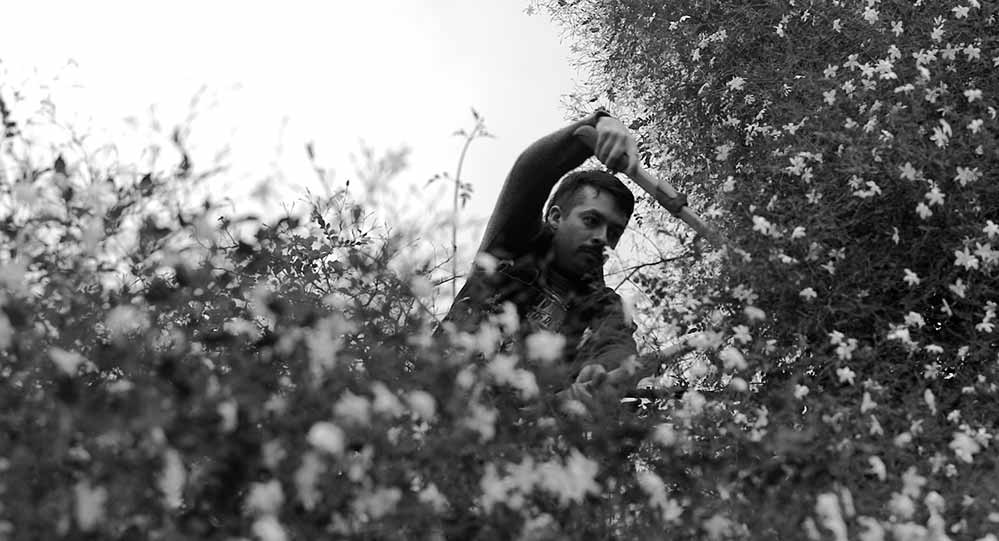
7R: Can you tell me about the animation in the film?
Ana Katz: I worked with animation because I felt that [the scenes with animation were] impossible [to capture] with reality. Moments where I feel so much pain talking about them that I can’t do it with the tools of conventional cinema. I need to escape, and, at the same time, I need to do it more clearly.
Now that I’m talking to you, I’m thinking that maybe it’s like a childhood memory — when you’re a child, and you process a big emotion with drawings. I didn’t need professional animation. Our art director, Mariela Ripodas, made the drawings. She’s a great person and friend and artist, and she has a lot of drawings.
I told her what I needed. For example, the dog dies, and [Sebastián] runs to meet the dog that is dead, and after, the dog transforms into the wild flowers that were in his garden. She [Mariela] understood because she’s great. She’s very simple and deep, Mariela.
7R: What was the process for editing the film?
Ana Katz: I have a very great team. When I talk about this, I can really see what a big team I had. For example, my editor is named Andrés Tambornino, and has worked on almost all my films with me. He knows me very well. He likes freedom, and asks nothing. So with this project, he was very, very enthusiastic. I explained to him how I needed to build it, and we began to search and to make a lot of versions.
I was always thinking about the film Un Chien Andalou. It’s not so much realism, but a film in which you feel something, but you don’t know how you got [the feeling]. I wanted that impression, but I didn’t know how to do it.
Then, you need to taste and experiment. And there is a moment you think, “Okay, I’ve arrived. I don’t know how, but I arrived, so we are okay.” We began to work like that. There were periods of editing [throughout the shoot], but after I finished shooting, I really began editing.
Another thing I really enjoyed was finding the leading actor in different physical periods and emotional periods of his life. The ellipses of the main character of the film was another thing that was a very strong point for me. This would be impossible in a normal four-week shoot. So I really needed to have space to make, I don’t know, the hair change, and the weight change. Life comes and transforms different things.
7R: The film jumps forward in time repeatedly. We see these little moments in Sebastián’s life, and then we skip ahead.
Ana Katz: In the script, that was very clear. That was a strong point from the beginning, from many, many years ago. Even the pandemic part, those parts were there from the very beginning. The ellipses of your emotions is what is important to me. The scenes represent events that will be a very strong memory that marks and will remain in Sebastián’s life.
I thought that sandwich on the train, for example, is an important moment. It’s like a meeting with a sandwich in a train, and it’s like a new beginning and cruel, at the same time. I tried to build a structure on a human scale, in the script. I was trying to build the structure to Sebastian’s life.
7R: I love the dogs in the film. Are you a dog owner? How did you think about how to shoot all those wonderful, moving scenes with the dog?
Ana Katz: Thank you for the question. It is a very beautiful and moving question because the main dog of Sebastián’s [which is Daniel’s dog in real life] died in the middle of shooting. It was a very, very, very big pain for Daniel, who played the main character. Now, when we see the film, it’s very strong. That scene in the countryside, when he runs and plays with the dog, was something very sweet for me, very moving. I think, again, that childhood appears in a way.
Also, my dog is in the film, which also died. That’s the problem with dogs! They live shorter lives than us. In a way, I think that it’s a mourning film, a film about grief. We loved those dogs.
7R: What did you mean when you say the film is about mourning?
Ana Katz: With my brother, we shared a very painful process when we lost our dad, when we were younger, but he [our father] was [also] still young. I felt that my brother had, in his eyes, a knowledge of a deep [mourning] process, and I wanted to share with him something regarding that feeling.
The musician of the film [Nicolás Villamil] is my best friend, who I have worked with on all of my films, and he died. His music in the film is something magical for me. I also lived that grief; well, I’m still living with — I think grief is always with us. I don’t think it’s like conventional stories; it’s present, future, and past always together. In the film, there are some feelings of sadness, but I didn’t want it to be depressing. I wanted to see the start of change [and to see] life.
You could be missing out on opportunities to watch great films like The Dog Who Wouldn’t Be Quiet at virtual cinemas, VOD, and festivals.
Subscribe to the Seventh Row newsletter to stay in the know.
Subscribers to our newsletter get an email every Friday which details great new streaming options in Canada, the US, and the UK.
Click here to subscribe to the Seventh Row newsletter.
